|
Location: Boyne Valley,
Meath, Ireland. |
Grid Reference:
53� 40' 60 N. 6� 28' 0 W |
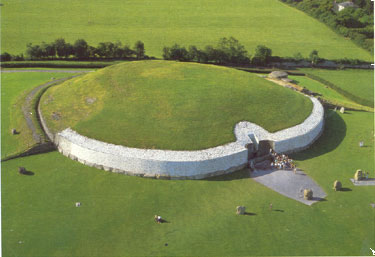
 Boyne Valley Complex:.
Boyne Valley Complex:.
The Boyne valley complex is recognised as one of the jewels in Europe's
megalithic crown. The passage mounds of Newgrange, Knowth and Dowth were
built around 3200 BC
(1), and the huge investment in labour and technical
expertise reflects the importance of this particular site to the Neolithic builders.
Quick Links:
(Click
here for map of the site)
| The
Boyne Valley Complex: (Brugh na B�inne). |
Location
- River Boyne, County Meath, Ireland.
Description
- The Boyne Valley complex is one of Europe's greatest megalithic sites.
It was constructed at around 3,200 BC, the same time as several other
prominent European megalithic complexes. It is clear from the orientation of the
passage-mounds that the whole complex was devoted to accurate measuring
of both the lunar and solar cycles simultaneously.
The site was surveyed by Dr. Jon Patrick,
who said of it:
'It has been shown that the Boyne
valley monuments were probably laid out to a design plan'
(2).

The three main features
of the complex are the passage mounds named
Newgrange,
Knowth and
Dowth. At present Newgrange is open throughout the year, Knowth is
open for parts of the year only, and Dowth is closed the whole year
round, but is free to roam around the outside.
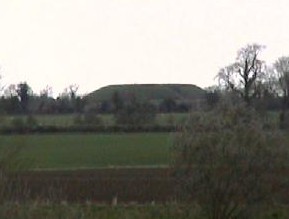

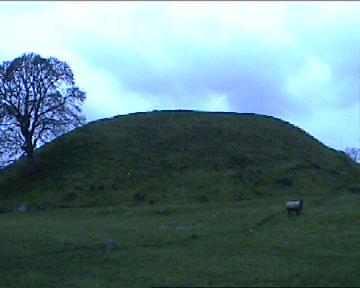
Knowth, Newgrange and Dowth.
The manpower and organisation behind the
construction of these monuments is on a civil scale. The guides at
the site tell us that the average human lifetime at that time was
only 35 years and they estimate it took 70 years to build, from
which we can assume they weren't built as tombs...
Cultural connections with
other European megalithic sites.
The art of the Boyne valley shows similarities
with art from megalithic structures in France, Scotland and Malta
as the following examples illustrate:`
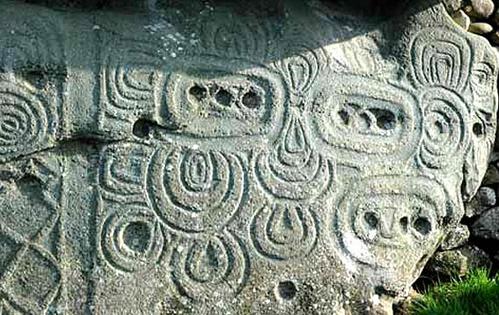

Kerbstones from Newgrange K-52 (left) and Knowth
(right).
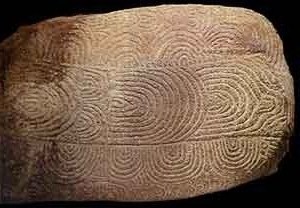
Gavr'inis,
France:
Newgrange: Spiral art.
The inscribed kerb-stone that lies directly in
front of the entrance to the Newgrange passage mound has the
triple spiral on the left hand side (also seen on the wall inside
the chamber). Almost identical art has been found on the Orkneys,
and variations of it can be seen throughout the ancient world.
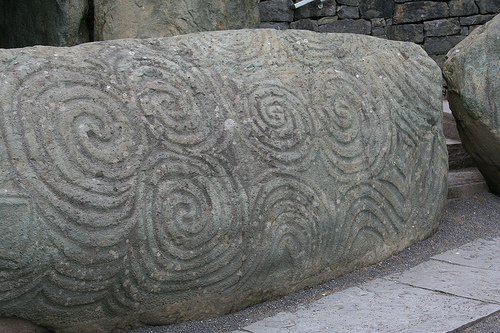
Spiral kerbstone from Newgrange.
Orkneys, Scotland:
A rare piece of Neolithic art was found on a beach by an Orkney
plumber :
The 6,000-year-old relic, thought to be a
fragment from a larger piece, was left exposed by storms. Local
plumber David Barnes, who found the stone on the beach in
Sandwick Bay, South Ronaldsay, said circular markings had shown
up in the late-afternoon winter sun, drawing his attention to
the piece.
Archeologists last night heralded the
discovery as a "once-in- 50-years event". But they warned that a
search for other fragments in the area would be hampered by a
lack of funds. Archaeologists compared the discovery to
the Westray Stone (below), a Neolithic carved stone discovered
in 1981 during routine quarrying work. It has been in Orkney
Museum for more than 25 years but is due to be returned to the
area this week and exhibited in the new Westray Heritage Centre
in Pierowall.
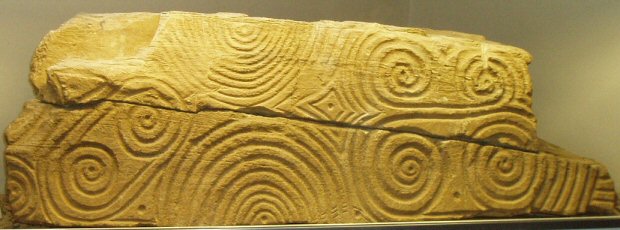
The Westray Stone, Orkneys.
The Westray Stone was once part of a
Neolithic chambered cairn which is thought to have been
destroyed in prehistory. A second part, and two smaller carved
pieces, were found the following spring in a dig led by Niall
Sharples, of the University of Cardiff.
"The stone is perhaps from a chambered tomb
and could be as old as 5,000 or 6,000 years, and would have
possibly been used as a ceremonial, sacred object. This is art
made in the same style as art from the Newgrange stone tomb in
Ireland or tombs in Brittany. It's part of this Neolithic world
linked by the Irish Sea." The world heritage site at
Newgrange in County Meath is estimated to be 600 years older
than the Giza pyramids in Egypt.
The stone will now be passed to Orkney Museum
and brought to the attention of the Queen and Lord Treasurer's
Remembrancer to determine if it is a treasure trove or not.
Ancient objects without an owner are automatically property of
the Crown. But Mrs Gibson added: "An object like this becomes
the property of everyone."
Ref: (http://news.scotsman.com/)
Maltese Art: The Maltese
temples are covered with various versions of the spiral form.
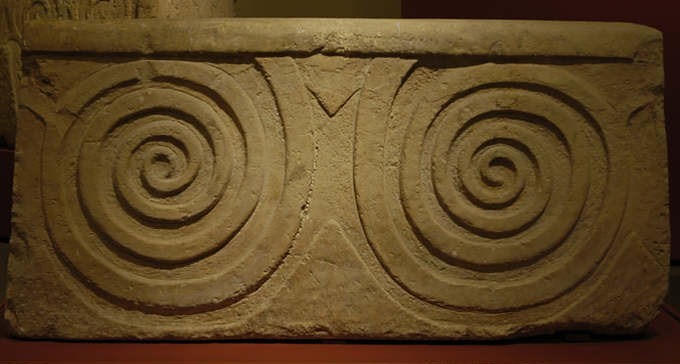
This stone is from
Bugibba temple on Malta.
Sill-Stone Symbolism:
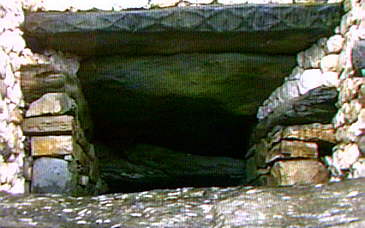
The stone above the
light-box at Newgrange has
eight (possibly nine originally), crosses on the side face. This
exact design is seen at another site in Ireland (Fourknocks),
and at Gavr'inis in France, where
the stone is on the floor, halfway along the passage.

Newgrange, eastern recess, (left), Light-box
(right)
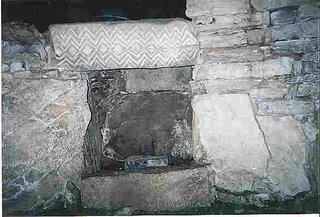
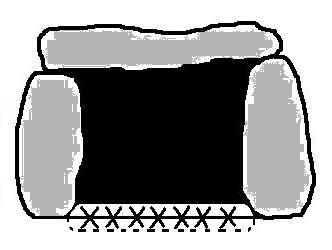
Sill-stones
at Fourknocks (Left) and
Gavr'inis (Right), where it is
found on the floor of the passage.
(More about
light-boxes)
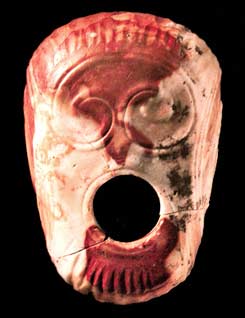
This exquisite mace-head
(right), was found at Knowth.
The flint
itself comes from the Orkney islands,
which are by no means the nearest source of flint to the Boyne valley.
It is
one of several clues that testify to a cultural exchange between these two
important megalithic complexes, along with the style of art, exterior and
interior similarities in design of the passage mounds (Maes
Howe) and a strong astronomical theme underlying the development of the
structures.
Astronomy at the Boyne Valley:
- 'The map of the external design plan of the complex (see above)
demonstrates a concern with solstices, equinoxes and cross-quarter days'
(2). There are 97 kerbstones on Newgrange, and only
three of them are
fully carved, their astronomical positioning is 'highly significant',
and it is the clear from the extra energy involved in creating accurate
alignments and orientations that astronomy played a fundamental role in
the structures existence.
A Cursus 'of unknown length'
(3), has
been found just east of Newgrange. It is similarly orientated to the
mid-winter solstice, as is the passage mound itself.
(More
about Cursus')
While it is suspected that the passage mounds and
their satellites served a functional role (as a means of measuring
solar and lunar cycles), the Boyne Valley passage-mounds are just
one part of a larger prehistoric landscape, in which megalithic
constructions (and through them the builders themselves) were
connected by alignment and orientation amongst each other and beyond
to the very universe itself.
The Boyne-valley complex is intervisible with
other prominent megalithic sites such as:
Tara Hill,
Loughcrew and
Four-knocks.
(Other Neolithic Western
European Complexes)
(Passage Mounds)
(Other prehistoric Irish sites)
|
|